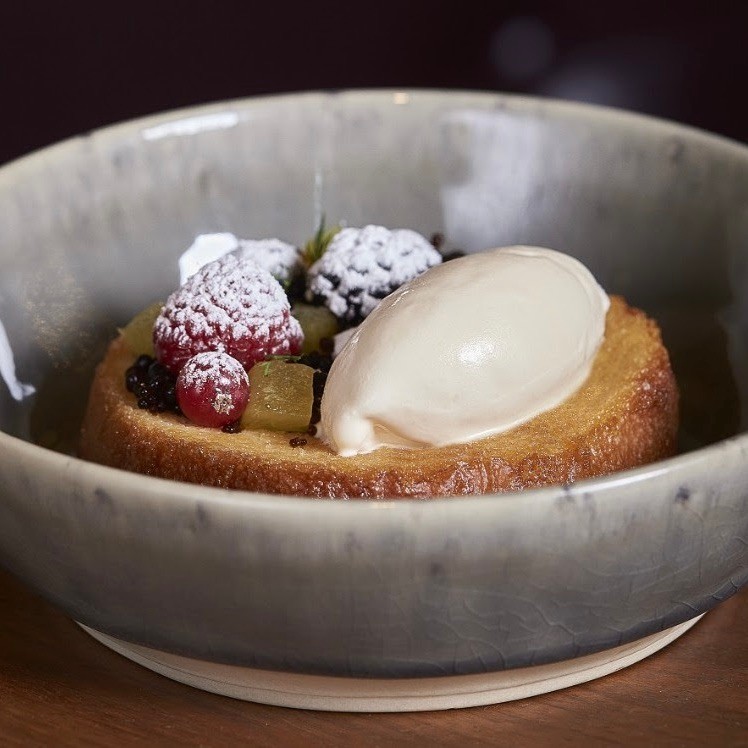.png)
Torrija, Sweet Simplicity for Holy Week
Bread, sweetened milk infused with cinnamon and citrus, egg, and olive oil for frying: this is the recipe for which many people go crazy
The tradition of dipping stale bread in milk to give it a new lease on life is lost in the mists of time. There has been evidence of this practice since Roman times, with references appearing in Apicius' De re coquinaria. Francisco Martínez Motiño, chef for Spanish king Philip II, includes in his book Arte de cozina, pastelería, vizcochería y conservería (1611) a recipe for torrijas made with bread soaked in milk and egg, then fried and later sweetened with syrup and sprinkled with sugar. This is the recipe that has remained practically up until today.
Although the torrija has always been associated with Holy Week—and this is the time of the year when it is most consumed—its popularity has grown notably in recent years, with the result that it can now be found all year round in pastry shops and bakeries as well as in restaurants of all kinds, from classic to signature.
The main variations that have appeared in recent times have gone in two directions. On the one hand, the bread. If it was most common to use day-old bread, which was a little bit hard, as the base for the recipe, now it's quite common to use breads that are softer, where the crust does not provide so much of a contrast. Many of these loaves for torrijas are sold during Holy Week.
On the other hand, the way it's prepared. The traditional way of preparing the torrija includes infusing the milk with sugar, cinnamon and citrus, soaking the bread in the mixture, dipping it in beaten egg, and frying it in olive oil. The last step is now sometimes replaced by baking.

Signature recipes
Of course, the popularity of this dessert has led many chefs to create their own signature version. José Andrés is one of them: for his torrija, he uses coconut milk and, to top it off, he burns the sugar that's sprinkled over the torrija as if it were a crema catalana, in addition to grating a little orange. He serves it with vanilla ice cream.
Dani García also uses coconut milk, mixed equally with cow's milk. The Andalusian chef adds white chocolate to the recipe and, instead of frying them, he caramelizes them by setting each side briefly on the frying pan. Dabiz Muñoz is another chef with his own version: his torrijas are very thick, and he coats them with grated dark chocolate and, finally, he tops them with bittersweet raspberry jam, flower honey, and rum.
As you can see, there are as many torrijas recipes as there are chefs. What also varies depending on the chef is the serving temperature—some prefer it hot, some eat it warm and, finally, there are those who like it cold—and the toppings, which can range from ice cream to cream, including different kinds of compote. All this, starting with a simple piece of bread...

